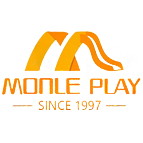What safety standards does Outdoor Playground Equipment need to meet?
Outdoor Playground Equipment refers to a variety of structures and facilities designed for children to play outdoors and engage in physical activities.Outdoor Playground Equipment needs to meet the following safety standards:
1. Structural Safety Standards
-Stability: The equipment must be stable enough to withstand the expected use of loads and external forces to prevent tipping or collapsing. For example, the base of a climbing frame should be wide enough and stable, and the supports of a swing should be firmly fixed on the ground.
-Firmness of connections: The connections between the various components should be firm and reliable, with no risk of loosening, detaching or breaking. Bolts, nuts, welding points and other connection parts should undergo strict quality testing.
-No sharp edges and protrusions: The surface of the equipment should be smooth and should not have sharp edges, corners or protrusions to prevent children from being injured during play. For example, the edges of the slide should be rounded and the crossbar of the climbing frame should not have burrs.
2. Material safety standards
-Non-toxic and environmentally friendly: The materials used should be non-toxic, tasteless and environmentally friendly, and will not harm children's health. For example, the plastic parts should meet the relevant environmental standards, and shall not contain harmful substances.
-Corrosion resistance: taking into account the impact of the outdoor environment, the material should have good corrosion resistance, able to withstand the sun, rain, wind and other natural factors of erosion. Such as metal parts should be rust-proof treatment.
-Strength and durability: the material should have sufficient strength and durability to withstand frequent use and certain impacts. For example, the climbing net should be made of high-strength rope or nylon material to ensure that it will not break when children climb on it.
3. Size safety standards
-Suitable for children's age: the size of the equipment should be designed according to the physical characteristics of children of different ages to ensure that children can use it safely. For example, the height and slope of slides should be appropriate for the age and ability level of toddlers and children.
-Safety spacing: Adequate safety spacing should be maintained between different pieces of equipment to prevent children from colliding during play. At the same time, a certain distance should be maintained between the equipment and the surrounding obstacles (e.g. trees, fences, etc.).
4. Use of safety standards
-Clear labeling: The equipment should be accompanied by clear instructions for use and safety warning labels to inform the user of the correct method of use and precautions. For example, the maximum load capacity and suitable age range should be marked on the swings.
-Regular Inspection and Maintenance: The playground management should conduct regular inspection and maintenance of the equipment, find and repair damaged parts in time to ensure that the equipment is always in a safe condition. The inspection includes structural integrity, tightness of connecting parts, and wear and tear of materials.
-Safety protection measures: For some equipment with high risk, such as climbing frames and aerial slides, it should be equipped with corresponding safety protection measures, such as protective nets and safety belts, in order to reduce the risk of injury to children.





.jpg)

